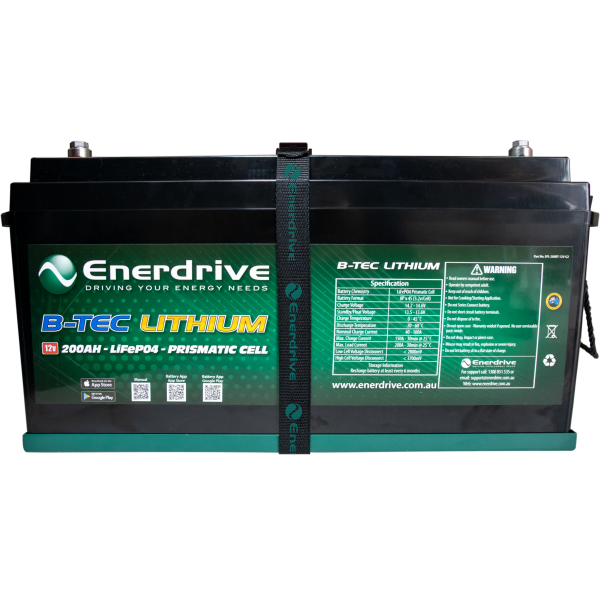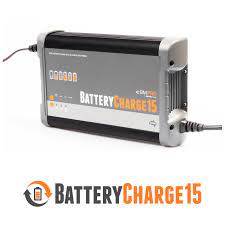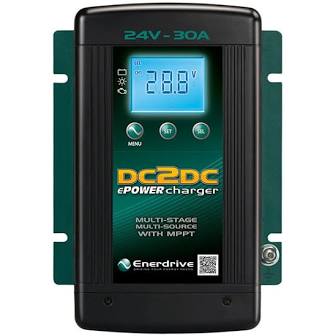Battery management systems explained
It’s always a fully charged topic, but battery management goes hand in hand with caravans and camper trailers. And the latest buzz on battery management is what’s generally called DC2DC.
In fact, DC2DC battery management turns out to be an essential part of getting the most out of your caravanning or camper experience. That’s because the loss of power or voltage drop can be a significant problem. What’s more, the longer you want to camp off-the-grid the bigger the potential problem.
To get around some of the misconception around battery charging that cause caravanners endless hassles as they increase their reliance on 12V power, This Travelling Life spoke to RV & Caravan’s tech guru Matt Linton to shed some light on the battery management conundrum.
What is a battery management system?
The idea is straight forward enough. A basic battery management device connects your auxiliary battery (or caravan battery) to your main battery. It makes sure that the charges from the alternator will apply to the main battery and will not be shared with the auxiliary battery until the main battery is fully charged. That will ensure you can start up your car, first time, every single time, even if you have heavy load on your auxiliary battery.
What do they do?
An upmarket battery management system is an impressive thing. It will accept charges from power sources other than the alternator including 240V AC or from a generator or 12/24V DC power from solar.
Better still a top-end system will accept multiple sources of power and select the best available charging source.
What batteries are best?
 Now, Matt Lenton is unequivocal on the question of what batteries to buy. He says, “Lithium is the way to go if you can afford it.” Simply put, his advice is to save your pennies and buy Lithium. A word of warning though. Matt says swapping to Lithium batteries is not as simple as just swapping batteries. He explains that lithium batteries have different charge rates to other batteries and you may have to make other changes to your system to fit lithium batteries.
Now, Matt Lenton is unequivocal on the question of what batteries to buy. He says, “Lithium is the way to go if you can afford it.” Simply put, his advice is to save your pennies and buy Lithium. A word of warning though. Matt says swapping to Lithium batteries is not as simple as just swapping batteries. He explains that lithium batteries have different charge rates to other batteries and you may have to make other changes to your system to fit lithium batteries.
But before you consider that, keep in mind that no batteries offer infallible service. Batteries can be damaged if they are frequently overly discharged. What that really means is that the bigger the battery bank or perhaps the bigger the single battery the lifespan of the batteries is longer. This suggest that we need a battery system that costs less money in the long term and is also larger in capacity.Lithium batteries have improved storage capacity relative to size and weight. However, Matt warns that they are expensive at the moment and they require specific charging conditions in order to operate correctly plus the battery itself must have an in-built cell management system.
Battery, BMS system and power
Matt’s recommendation is that if you want indefinite off-grid camping, “you have to think about a fairly large system.” He says if you want to continuously camp off-grid or just camp off-grid for a couple of days will impact on the size of the charge systems you install. There are three types of charge source, 240-volt power, solar and DC2DC. 240V power will come from either connecting to the power grid or from a generator. While DC2DC power is off your tow vehicle or motorhome itself. The amount of solar you can harvest will depend on the number and type of solar panels you have.
Matt says in deciding on the system they are going to use, travellers should look at the amount of power they are likely to use in 24 hours. For example, a traveller might need to consider the power use by a compressor fridge, television and lights. Their system must be able to handle that level of consumption. That consumption when considered in line with the type of camping you wish to do will tell you how much solar power you are likely to need. If you need a lot of solar power and don’t have the roof space, Matt says it’s probably time to consider plug in portable panels.
Battery monitoring
Whether or not you are using lithium batteries with built in blue-tooth capability or not. Your BMS should have the ability to monitor the health of your batteries. Matt says you need a monitor that displays the battery voltage, the live current draw, amp hours charged and consumed, and the estimated state of charge of the battery. This information offers a clear picture of how well your system is operating, giving you the chance to make sure you can turn off load that is not in use or perhaps replacing high energy usage devices for low energy consumption substitutes.
What's wrong with the alternator?
In case you’re thinking that you can get by charging your auxiliary battery by just hooking up your tow vehicle, turning it on and letting your car run for 15 minutes so your car’s alternator will charge your batteries.
That idea had Matt shaking his head. “It is not enough. Your charge rate is worked out on an hourly rate. If you are consuming 30 Amps/hour. If you turn your car on, which produces 30-40 Amps, it takes an hour to put that 30-40 Amps back into the system.” That means a simple 15-minute charge will not do the trick. He said, continuously incompletely charging a battery will also reduce the life-span of your battery.
That is why Matt recommends having DC2DC charger fitted. He explained “that a DC-DC charger takes the voltage from the vehicle and it goes through a full three-stage charging cycle through the DC charger. That means it’s charging the battery until it’s full.”
He said that the often-misunderstood element is that a lot of new cars actually have smart alternators which means that at certain slower speed the alternator actually shuts down meaning the vehicle alternator won’t charge an auxiliary battery. Most BMS systems do contain DC2DC devices in them.
Matt Linton's solution
There are a number of quality systems including Redarc’s BMS1230 series, also have inbuilt solar regulation, multi-stage mains battery charging and remote readout.
 Leading RV power management specialist BMPro has the BatteryPlus35 suite including the BatteryPlus35SR. That’s a battery management system designed to offer a complete power solution for recreational vehicle applications and includes a built-in distribution board with multiple DC outputs for load connection, this power supply and charger is the ultimate all-in-one system.
Leading RV power management specialist BMPro has the BatteryPlus35 suite including the BatteryPlus35SR. That’s a battery management system designed to offer a complete power solution for recreational vehicle applications and includes a built-in distribution board with multiple DC outputs for load connection, this power supply and charger is the ultimate all-in-one system.
Enerdrive has a range of battery monitors plus battery chargers. The eLITE Battery Monitor by Enerdrive is equipped with an internal programmable alarm relay, to start a generator when needed or to turn off devices when the battery voltage exceeds programmable boundaries.
 The ePOWER DC2DC+ Battery Charger will do a full charge cycle to float stage on the house battery bank with ability to choose either GEL, AGM, Flooded, Custom Programmable or Lithium.
The ePOWER DC2DC+ Battery Charger will do a full charge cycle to float stage on the house battery bank with ability to choose either GEL, AGM, Flooded, Custom Programmable or Lithium.
However, Matt Linton’s recommendation is you need a system that will cater for a variety of batteries and take power from a variety of power sources.
So, when it comes to choosing a BMS system Matt recommends a little DIY activity. He says be the “components that do the same thing and put them together. So, I might be an Enerdrive DC2DC charger, Pentron solar charger and a Ctech 240-volt charger or something like.” If you want a really good BMS system that’s the way I’d go.” He says that pick, plug and play approach will give you the best charge rates and a combination of the best products. He then recommends, if your budget can accommodate it, for simplicity's sake buy one large Lithium battery rather than working with a stack of batteries. Matt sums up his approach simply saying, “you can’t always get what you want in one BMS system.”
Power On